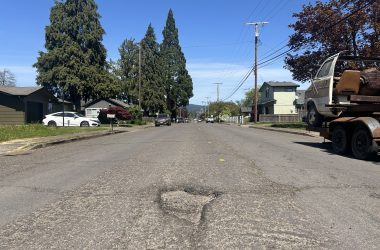 The City is trying to encourage more residents to consider building ”Accessory Dwelling Units” by simplifying code. Chronicle Staff photo
The City is trying to encourage more residents to consider building ”Accessory Dwelling Units” by simplifying code. Chronicle Staff photo
The Springfield City Council has changed the development code, hoping to encourage builders to construct smaller housing units, an area city leaders say is necessary as one part of its affordable housing strategy.
Council members hope to make the building codes easier and, potentially, less expensive so builders are incentivized to create smaller housing units. The City also plans to promote awareness of the units and temporarily waived development charges from July 1, 2017 to June 30, 2022.
Accessory Dwelling Units (ADU) are small, self-contained living quarters that are allowed in conjunction with an existing single-family house. An ADU has its own entrance, as well as a separate kitchen, bathroom and sleeping area. These buildings can be an apartment created with an existing home, an addition onto a home or above a garage, a freestanding cottage or part of a new housing development.
”The City sees several benefits of having more ADUs in Springfield, primarily to increase the supply of small rental units for which the vacancy rate is lowest,” a news release stated.
Due to the demand for smaller units rising, rent for those units have increased over time than the rent for larger rental units, said Sandy Belson, Springfield’s comprehensive planning manager.
”(ADUs) come into play because we have a tight rental market and waiting list for small units,” she explained.
An original waiver was intended for a two-year period; the council extended that by three years, subject to an annual review. It reduced the costs by waiving transportation, stormwater and wastewater – lowering construction costs by an estimated $5,000 to $6,000.
”(The Council) found that the waiver, along with development code amendments adopted last year, has had the result of stimulating the addition of ADUs to the City’s housing supply,” according to a spokesperson.
Since the adoption of the code amendments, the City has received 13 applications to build the units, issued four building permits and two ADUs have been completed.
Belson said that the City doesn’t know how many ADUs there are in the area because they haven’t been keeping track.
The code changes included eliminating the minimum square footage requirement, allowing ADUs in the Washburne Historic District and in medium and high density residential zones and removing the requirement for the property owner to live on site.
Beyond combatting the affordable housing crisis, ADUs have other benefits to the community. It increases density in existing neighborhoods by taking advantage of existing infrastructure, diversifies the demographics of an existing neighborhood, provide financial benefit to the property owner, trigger economic development and create opportunities for intergenerational living or on-site caretakers.
”(ADUs) address a demographic need as families change compositions – children growing older and leaving, children coming back for college, adults needing a caregiver – having that flexibility to stay where they are but accommodate a parent or child in an adjacent home can help,” Belson explained.
She added that for residents on a fixed income, rent coming from an ADU can also help maintain affordability of the property and home over time.
”People who do own homes should consider if it’s an option for them,” she said. ”It’s something they could explore and we encourage them to come by and ask questions.”








